Pedro Zamora
| Pedro Zamora | |
|---|---|
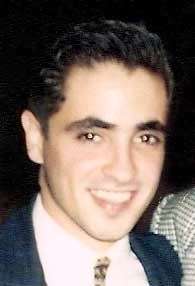 Zamora in 1993 | |
| Born |
Pedro Pablo Zamora y Díaz February 29, 1972 Diezmero, San Miguel del Padrón, Havana, Cuba[1] |
| Died |
November 11, 1994 (aged 22) Coconut Grove, Miami, Florida, U.S.[1] |
| Cause of death | AIDS-related progressive multifocal leukoencephalopathy |
| Occupation | Reality television personality, AIDS educator |
| Partner(s) | Sean Sasser (1994-1994) |
Pedro Pablo Zamora (born Pedro Pablo Zamora y Díaz, February 29, 1972 – November 11, 1994) was a Cuban-American AIDS educator and television personality.[1][2] As one of the first openly gay men with AIDS to be portrayed in popular media,[3] Zamora brought international attention to HIV/AIDS and LGBT issues and prejudices through his appearance on MTV's reality television series, The Real World: San Francisco.[1][2]
Zamora's romantic relationship with Sean Sasser was also documented on the show; their relationship was later nominated by MTV viewers for "Favorite Love Story" award,[4] and the broadcast of their commitment ceremony, in which they exchanged vows, was the first such same-sex ceremony in television history, and is considered a landmark in the history of the medium.[5][6]
U.S. President Bill Clinton credited Zamora with personalizing and humanizing those living with HIV—especially to Latino communities—with his activism, including his testimony before Congress.[7][8] Zamora's personal struggle with AIDS, and his conflict with housemate David "Puck" Rainey is credited with helping to make The Real World a hit show, for which Time ranked it #7 on its list of "32 Epic Moments in Reality-TV History".[9]
Early life
Pedro Zamora was born in Diezmero,[1] San Miguel del Padrón, on the outskirts of Havana, Cuba,[2] to Hector Zamora, a food-warehouse worker,[10] and Zoraida Diaz,[2] a housewife.[10] Zamora was their eighth and youngest child. After the birth of their seventh child, Zoraida had been told that she would not be able to have another, so when Zamora was born feet first on February 29, 1972, leap day leap year, he was regarded as charmed and treated specially by those in his community. Hector had fought in the Cuban Revolution for Fidel Castro, but became disillusioned with the changes brought by communism after Castro came to power. According to Pedro, any mention of Castro in their home would result in a tirade from Hector which earned him a reputation with local informants. As a result, life became difficult for the Zamoras who lived in a small house with a dirt floor. Food was scarce and Zoraida traded on the black market for food.[11]
In 1980, when Pedro was eight, the Zamoras left Cuba for the United States during the Mariel Boat Lift. After five days of processing in Cuba, the entire family was set to board on May 30, 1980, when, hours before they were to do so, Cuban officials ruled that his four older brothers were too close to draft age and had to remain.[12] His oldest sister, a communist official, chose to stay.[10] The older siblings insisted, over their parents’ objections, that the rest of the family go to the U. S. without them so that the younger ones could have a better life. Zamora's parents took him, his sister Mily, and his brother Jesus onto a boat filled with 250 people that had been built for half that number. For most of Pedro's life the Zamoras resided in Hialeah, Florida, a suburb of Miami where, in part as a result of the family’s continuing separation, Pedro became very close to his mother.[12]
Zoraida Zamora, his mother, died of skin cancer when Pedro was 13.[10][13] His sister Mily, who was eight years older, helped raise him.[14] Zamora, grief-stricken by the loss of his mother, threw himself into schoolwork becoming an honors student, president of the Science Club, captain of the Cross-Country team, and as one of the most popular students in Hialeah High School was voted Most Intellectual and Most All-Around.[13] His mother's death inspired him to study to become a doctor.
Soon after his mother's death Zamora realized that he was gay and he became sexually active with a number of partners. Although AIDS had been prominent in the news, Pedro, who was a young teenager at the time, was ignorant of safe sex, the only AIDS education given him presented the disease as only afflicting prostitutes and drug addicts. Homosexual sex and condoms were never mentioned so Zamora did not identify himself as someone at risk. When he was fourteen, his father, who had suspected that his son was gay, discovered that he had a boyfriend. When his father confronted him, Zamora admitted his sexual orientation. Hector, rather than being upset, was concerned over the homophobia to which his son might be subjected, but affirmed that he would be supportive of his son.[13][15]
Living with AIDS
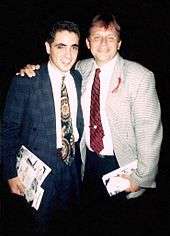
In late 1989, in his junior year of high school, 17-year-old Zamora donated blood during a Red Cross blood drive, and received a letter a month and a half later saying that his blood tested "reactive", though it did not specify for what, as the general screening was for a variety of viruses and infections. Zamora decided to be tested for HIV, and on November 9, 1989 the results confirmed that he was HIV-Positive.[10][16][17]
Although they were supportive, his family was devastated by the news. Zamora decided to redouble his efforts to graduate from high school before he died, graduating in 1990.[18][19] Five months later, he suffered a severe case of shingles that covered the entire right side of his body and face. With medication, the condition subsided, but the experience inspired Zamora to join a Miami-based HIV/AIDS resource center called Body Positive. There he met others with HIV and AIDS, and educated himself about the disease, and on how to lead a positive life with it. Soon thereafter, he began to talk about his condition to others to attempt to raise awareness about the disease in his community.[10][17][18]
Zamora enrolled at Miami Dade College and decided to make a career as an AIDS educator.[14][20] He began to lecture at schools of all levels, PTA meetings, churches, traveling the country, sitting on the boards of various AIDS organizations, and hoping to use what time he had left to prevent others from sharing his fate.[20] In five years, he spoke publicly hundreds of times, attended an international AIDS conference, and accepted a position on the board of a charitable trust endowed by insurance companies (although he had no insurance himself), through which he came to the attention of the media.[10] The constant travel took its toll on Zamora, who at times was so tired that he was forced to cancel speaking engagements.[21] In 1991, his work came to national attention when Eric Morganthaler wrote a front page article about him for the Wall Street Journal. This coverage resulted in invitations to talk show interviews by Geraldo Rivera, Phil Donahue and Oprah Winfrey.[20][22] Though Zamora was openly gay, he chose to not make that explicit point to school children, preferring to emphasize to them that he got the disease through unprotected sex, to underscore the fact that both homosexuals and heterosexuals could contract HIV. On July 12, 1993, he testified before the United States Congress, arguing for more explicit HIV/AIDS educational programs, saying, "If you want to reach me as a young man – especially a young gay man of color – then you need to give me information in a language and vocabulary I can understand and relate to."[10][23]
Zamora attended the 1993 Lesbian and Gay March on Washington, where a fellow AIDS educator named Sean Sasser introduced himself to Zamora. Although Sasser did not characterize his meeting Zamora as love at first sight (they were both involved with other people at the time), he was moved by Zamora's presence and conviction, recalling, "I was kind of like, 'Wow.' I had never run across someone who was as good at it as he was." Sasser encouraged Zamora to call him if Zamora ever visited San Francisco,[24] where Sasser had been living for a couple of years,[8][25] Sasser subsequently learned that producers of the MTV reality TV show, The Real World were looking for an HIV positive person to cast in the 1994 season in San Francisco.[24]
The Real World
When Zamora and his best friend and roommate, Alex Escarano, became aware of the Real World casting in mid-1993, Escarano convinced him to put together an audition tape, arguing that he could reach more people simply by living in The Real World house than through the cross-country travel that exhausted him.[22] Six months later, Zamora was informed that he had been chosen to be a castmate on the show, beating out 25,000 applicants.[21]
Zamora and his six castmates (Mohammed Bilal, Rachel Campos, Pam Ling, Cory Murphy, David "Puck" Rainey, and Judd Winick) moved into the house at 953 Lombard Street on Russian Hill on February 12, 1994. While the producers informed the other six housemates that they would be living with someone HIV-positive, they did not tell them who it was. The first to meet Zamora was Cory Murphy, who traveled to the house with Zamora. During their trip, he told her he had AIDS. Zamora quickly bonded with his housemates. Zamora informed his roommate, Judd Winick, that he was the one with AIDS by telling him he was an AIDS educator,[26] and the rest of the cast by showing them a scrapbook of his career as an AIDS educator. Another castmate, Rachel Campos, became uncomfortable with this, and initially distanced herself from Zamora, stating that she wanted to know how this would affect her, but said nothing for fear of seeming intolerant. Zamora took this as an act of rejection on her part,[27] though the two later formed a rapport in the second episode, in which Zamora addressed her concerns about his condition by educating her about HIV and AIDS.[28] Nonetheless, Zamora later took offense at jokes about homosexuals that Rachel engaged in with David "Puck" Rainey.[29]
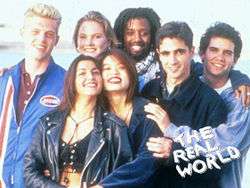
Winick, who became best friends with Zamora, stated that Zamora had an almost "clairvoyant" ability to broach sensitive subjects, and still sensing that Winick had lingering doubts about sharing a room with him, Zamora educated Winick on ways in which the virus could and could not be transmitted, and did so subtly, through casual conversation, so that Winick did not even realize it.[30]
As the weeks went on, Winick and castmate Pam Ling often attended Zamora's lectures at schools in the Bay Area, which allowed them to learn more about HIV and AIDS.[31] Castmate Cory Murphy joined the trio about halfway through their stay in the loft, often joining them on outings.[32]
When Zamora moved into the loft nine months after the march in Washington, DC,[25] he and Sean Sasser began dating. Zamora asked the show's producers for permission to go out without cameras, so that he and Sasser could get to know one another in a more natural setting. The producers allowed this, and the two young men fell in love. Sasser proposed to Zamora, and the two exchanged vows in a commitment ceremony in the loft,[8][33] the first same-sex commitment ceremony on TV.[5] Their relationship was nominated for "Favorite Love Story" at the 2008 Real Worlds Awards Bash.[4]
Midway through filming, Zamora's health suddenly declined. Producer Jon Murray states, "He got sick much faster than he expected. That's when he made us promise to tell his story till the end."[14] Also complicating Zamora's time in the Real World house was his conflict with housemate Rainey, which began early on in their stay there. In addition to the various personality traits of Rainey's with which all the roommates took issue, Rainey mocked Zamora's Cuban accent, denigrated his career as an educator, and made aforementioned gay-related jokes that offended Zamora. Winick described Rainey as "obnoxious" and "homophobic", and Zamora, feeling that the stress of his confrontations with Rainey was contributing to his deteriorating health, announced he would move out. The entire cast voted instead to evict Rainey from the house. Zamora's health continued to deteriorate, however, and he suffered night sweats, Pneumocystis jiroveci pneumonia, and weight loss, and slept more frequently. Although he was able to participate in activities like parasailing during the group’s trip to Hawaii, the cast grew more worried about him nonetheless, often covering up for him during their weekly "confessional" interviews with the producers by telling them that Zamora was doing fine when they knew otherwise.[34]
After The Real World and death
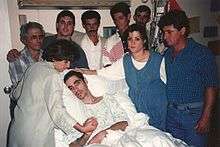
The cast moved out of the loft on June 19, 1994, and the first episodes of The Real World: San Francisco began airing a week later. Zamora visited his family in Miami before returning to San Francisco to live with Sasser.[35] On a speaking tour, he complained of constant headaches.[24] When Winick, Zamora, Murphy, and Ling met again that August for a reunion party, Zamora's health and appearance had worsened and, having previously been talkative, he was often silent for long periods, finding it difficult to follow conversations or remember locations of places he had known for years. When Zamora was in New York for an ultimately canceled interview with CBS's CBS This Morning,[10][35] his contacts at MTV convinced him to see a doctor, but when he arrived at the MTV offices, he did not know where he was. On August 17, Zamora checked into St. Vincent's Hospital and was diagnosed with toxoplasmosis, a condition which causes brain lesions, fatigue, headaches and confusion. While medication alleviated the toxoplasmosis, further tests, including a biopsy,[35] revealed he had progressive multifocal leukoencephalopathy (PML),[24][35] a rare and usually fatal viral inflammation of the brain that breaks down the electrical impulses of the nervous system. More serious symptoms of the illness can include paralysis or aphasia. Although only 1% of AIDS patients contract PML, it usually dissipates on its own in patients with T-cell counts higher than 300-400. At the time, Zamora's T-cell count was 32. The inflammation was attacking the frontal lobe of his brain, causing him short-term memory loss. Zamora was given three to four months to live.[35]
On September 3, about three weeks after checking into St. Vincent's, Zamora was flown to Mercy Hospital in Miami, where his family could be close to him.[7][10] His family was not accepting of Sasser, however,[24] and because the PML gradually took away Zamora's ability to speak,[24][36] Zamora was too ill to explicitly communicate to them the importance of Sasser in his life. This led to confrontations between Sasser and the Zamoras, who told him that "Pedro did not need to have a lover anymore", and mostly excluded Sasser from Zamora during his final days.[24] When then-President Bill Clinton called Zamora to thank him for his work,[7] Zamora, according to Winick, expressed elation at the call and was able to respond,[36] though Mily Zamora states that whether her brother understood who was calling is unclear,[37] as the PML would eventually take away Zamora's ability to see, hear and speak entirely.[10] Clinton, along with a Zamora family friend named Alonso R. del Portillo, Attorney General Janet Reno, Secretary of Health and Human Services Donna Shalala, and Florida Congresswoman Ileana Ros-Lehtinen, reached an agreement with Cuba that would admit 20,000 Cubans per year. Zamora's three brothers and their families would be among the first and would arrive in the next couple of weeks, reuniting the family for the first time in 14 years.[10][36][37]
On October 21, Winick announced to the press that MTV had set up a trust fund in order to pay for Zamora's medical costs, as Zamora had no medical insurance,[7][10][38] as he received Medicaid, but could not, due to his AIDS diagnosis, qualify for a private policy.[10]
During the wait for the family members to arrive from Cuba, Zamora developed a high fever.[2] Wishing not to subject his family to a slow and prolonged death as had occurred with his mother, Zamora stated his wish not to be kept alive by artificial means. Hospitalized and unable to speak for almost a month, being fed intravenously, and becoming unresponsive, his family honored his wishes and withdrew life support, including medication, food and water. Surrounded by his family, Sasser, Escarano, Winick, and Ling, Zamora died at 4:40 a.m. EST on November 11, 1994, hours after the final episode of The Real World: San Francisco aired.[10][14][39] He was buried on November 13.[39]
Legacy and tribute
After his death, Zamora was publicly praised by President Bill Clinton and Donna Shalala for his leadership and work in educating high school students, saying that through his appearances on The Real World, Pedro had become a part of viewers’ families, and that all people who watched the show could now say that they “knew” someone who had lived with AIDS.[7][40][41]
Queer theorist, José Esteban Muñoz, dedicated a chapter to Zamora in his book Disidentifications: Queers of Color and the Performance of Politics[42] In the chapter titled, "Pedro Zamora's Real World of Counterpublicity: Performing Ethics of Self," Muñoz, describes the ways in which Zamora used the "confessionals" to perform an ethics of self, and in doing so disidentified with the mainstream.
MTV broadcast A Tribute to Pedro Zamora, a special memorial program, in Zamora's honor.
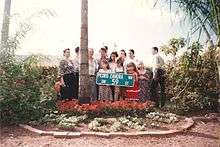
On February 28, 1995, the portion of the street in front of McMillan Middle School in Miami was renamed Pedro Zamora Way in a ceremony attended by Zamora's father and sister Mily.[43][44]
A number of organizations were created in Pedro's name, including National Pedro Zamora Foundation, which was founded by Winick, Ling, Mily Zamora, and Sasser, The Pedro Zamora Memorial Fund, which was created by the AIDS Action Foundation, the Pedro Zamora Youth Clinic, The Pedro Zamora Public Policy Fellowship[45] and the Pedro Zamora Youth HIV Clinic.[46] Winick, Ling, Mily Zamora and Sasser eventually distanced themselves from the Foundation due to conflicts with its president, Brian Quintana.[47] Zamora's sister Mily began public speaking on AIDS after his death.[14]
Winick continued lecturing on behalf of Zamora[48] for three years,[49] and his friendship with Zamora helped shape his subsequent work as a comic book writer and artist. His autobiographical graphic novel, Pedro and Me: Friendship, Loss, and What I Learned, was published in September 2000. It was nominated for the 2001 Eisner Award for Best Graphic Album: New,[50] and won a 2001 American Library Association Stonewall Book Award for Non-Fiction Honor Books,[51] and Winick his first GLAAD Media Award for Outstanding Comic.[52] It has been incorporated into school curricula across the country, such as UCLA, which made it its common book in 2013.[53] Winick's experiences with Zamora would also help shape his work in mainstream superhero comics, which would receive considerable media attention for storylines in Green Lantern and Green Arrow which explored gay or AIDS-related themes.[54]
Ling went on to devote her medical research to HIV and AIDS.[40]
Pedro's partner, Sean Sasser, continued his activism for LGBT issues, and his work as an HIV educator. In 1995, he spoke at the inaugural White House AIDS conference, and was appointed by President Bill Clinton to the Presidential Advisory Council on HIV/AIDS.[25] He moved to Atlanta in late 1995, in order to be with his boyfriend, and hoped to open a café.[24] He was later a pastry chef at Ritz-Carlton hotel properties and head pastry chef at a luxury hotel in Portland before settling in Washington DC in 2012, where, as a pastry chef at a restaurant called RIS,[25] he was praised by the Washington Blade for his work there.[55] In June 2013 Sasser married Michael Kaplan,[6][25][56][57] whom he had dated off and on since the 1990s, and with whom he had moved in six months prior.[5] While in Washington, Sasser served as a board member of the AIDS Alliance for Children, Youth and Families. He was active in youth and mentoring organizations, and he and Kaplan served as foster parents to a 4-year-old girl.[25] In July 2013, Sasser, who had also been HIV positive for 25 years, was diagnosed with mesothelioma, a rare cancer of the lungs.[5] He died at his home on August 7, 2013, at the age of 44.[5][6][25][56][57] He is survived by his mother, Patricia Sasser of Detroit, and a younger sister.[24][25]
In 2008 Bunim-Murray Productions produced a film, Pedro, directed by Nick Oceano, dramatizing Zamora's life. The film was an Official Selection at the 2008 Toronto International Film Festival. In the film, which is Bunim-Murray's first scripted project, Zamora is portrayed by Alex Loynaz.[58]
In 2009, the National AIDS Memorial Grove in San Francisco began the Youth Essay Scholarship Program, which in 2014, was expanded and renamed the Pedro Zamora Young Leaders Scholarship. Every August, the scholarship program gives awards ranging from $2,500 to $5,000 to high school seniors, college freshmen, sophomores and juniors who are actively fighting HIV/AIDS through public service and leadership.[59]
Notes
- 1 2 3 4 5 Wall Street Journal, September 4, 1994, Page A-1.
- 1 2 3 4 5 Pedro Zamora, WPBT Channel 2-New Florida, November 11–17, 2004, Oscar Lopez Producer
- ↑ Heigl, Alex. "Twelve Crucial Moments in the Evolution of MTV". Nerve. August 2011.
- 1 2 "Real World Awards Bash nominees for "Favorite Love Story"". MTV. Retrieved 18 January 2011.
- 1 2 3 4 5 Duke, Alan; Carter, Chelsea, J. (August 8, 2013). "Sean Sasser, whose ceremony with partner on 'Real World' was TV first, dies". CNN.
- 1 2 3 Oldenburg, Ann (August 8, 2013). "'Real World' star Sean Sasser dies at 44". USA Today.
- 1 2 3 4 5 A Tribute to Pedro Zamora MTV. November 1994.
- 1 2 3 Winick, Judd (2000). Pedro and Me: Friendship, Loss, and What I Learned. Henry Holt & Co. pp. 103-109.
- ↑ Webley, Kayla. "32 Epic Moments in Reality-TV History: 7. The Real World: Puck vs. Pedro", Time magazine, accessed April 9, 2011.
- 1 2 3 4 5 6 7 8 9 10 11 12 13 14 15 Israel, Betsy (November 28, 1994). "HIV, And Positive, Pedro Zamora of MTV's Real World Lived His Too-Brief Life To Its Limit". People. Vol. 42, No. 22
- ↑ Winick, Judd (2000). Pedro and Me: Friendship, Loss, and What I Learned. Henry Holt & Co. pp. 33-36.
- 1 2 Winick (2000). pp. 37-40.
- 1 2 3 Winick (2000). pp. 41-44.
- 1 2 3 4 5 Rothaus, Steve (March 22, 2009). "Years After his Death, A Young AIDS Activist's Life is Celebrated on Film: Remembering Pedro". The Miami Herald. p. 1E.
- ↑ Manning, Shaun (April 1, 2000). "Judd Winick on MTV's 'Pedro' Movie". Comic Book Resources.
- ↑ Winick. 2000 (2000). pp. 45-46.
- 1 2 Greenbaum, Kurt (February 5, 1992). "One Of Their Own, Teen-ager with AIDS Virus Cautions Students". Sun-Sentinel. p. 1B
- 1 2 Winick (2000). pp. 49-56.
- ↑ "Together and Apart". The Real World: San Francisco. Season 3. Episode 8. August 18, 1994. MTV.
- 1 2 3 Winick (2000). pp. 57-58.
- 1 2 Winick (2000). pp. 58-59.
- 1 2 Vaillancourt, Daniel (July 11, 1994). "Pedro Zamora Tells All". The Peak. Retrieved 18 January 2011.
- ↑ "Pedro Zamora". Aidsaction.org. Archived from the original on 4 May 2008. Retrieved 18 January 2011.
- 1 2 3 4 5 6 7 8 9 Jones, Anderson (June 1997). "Nowhere Else to Go". POZ.
- 1 2 3 4 5 6 7 8 McGonough, Megan (August 13, 2013). "Sean Sasser, part of one of TV’s first gay romances, dies at 44". The Washington Post.
- ↑ Winick (2000). pp. 61-67.
- ↑ "Video of Episode 1 of ''The Real World: San Francisco'' ("Planes, Trains and Paddywagons")". MTV. March 28, 2009. Retrieved 18 January 2011.
- ↑ "Video of Episode 2 of ''The Real World: San Francisco'' ("Love Stinks")". MTV. March 28, 2009. Retrieved 18 January 2011.
- ↑ "Video of Episode 6 of ''The Real World: San Francisco'' ("Trouble in Paradise")". MTV. March 28, 2009. Retrieved 18 January 2011.
- ↑ Winick (2000). pp. 68-71.
- ↑ Winick (2000). pp. 96-102.
- ↑ Winick (2000). p. 111.
- ↑ "Video of Episode 19 of ''The Real World: San Francisco'' ("Love Rules")". MTV. March 28, 2009. Retrieved 18 January 2011.
- ↑ Winick (2000). pp. 114-115.
- 1 2 3 4 5 Winick (2000). pp. 119-137.
- 1 2 3 Winick (2000). pp. 141-146.
- 1 2 "AIDS activist, near death, to see family from Cuba". Reuters. October 7, 1994. Retrieved 18 January 2011.
- ↑ "'Real' Life Support". Entertainment Weekly. September 30, 1994.
- 1 2 Winick (2000). pp. 146-161.
- 1 2 Salvatore, Rosanne. "'The Real World' cast members: Where are they now?". Daily News. April 1, 2011. Page 8 of 44
- ↑ Winick, Judd. 2000. Page 160.
- ↑ Muñoz, José Esteban (1999). Disidentifications: Queers of Color and the Performance of Politics. University of Minnesota Press.
- ↑ "Zamora". "The Big Story". Associated Press. Retrieved July 25, 2013.
- ↑ "Street named for Zamora". Spartanburg Herald-Journal. March 1, 1995. p. A2. Archived at Google News. Retrieved July 25, 2013.
- ↑ "The Pedro Zamora Public Policy Fellowship". Aidsaction.org. Archived from the original on 3 April 2008. Retrieved 18 January 2011.
- ↑ Boxall, Bettina (July 21, 1995). "AIDS Clinic Seeks to Serve Unique Needs of Youths : Health: New center is intended for those in their teens and 20s who often fail to get tested or do not pick up results." Los Angeles Times.
- ↑ Condon, Lee (July 7, 1998). "Using Pedro" The Free Library. Originally published in The Advocate.
- ↑ Winick (2000). pp. 162-173.
- ↑ Mentioned at the end of the 2008 film Pedro.
- ↑ "2001 Will Eisner Comic Industry Award Nominees Winners". Hahn Library Comic Book Awards Almanac. Retrieved July 25, 2013.
- ↑ "Stonewall Book Awards". American Library Association. Retrieved July 25, 2013.
- ↑ Weiland, Jonah (June 13, 2003). "Green Lantern honored by GLAAD". Comic Book Resources.
- ↑ "UCLA Common Book 2013-2014: Pedro & Me by Judd Winick". UCLA Library. Retrieved July 25, 2013.
- ↑ "Bold New Comic Deals With Issue Of AIDS". CNN. October 23, 2004. Retrieved 18 January 2011.
- ↑ Howard, Jonathan (May 16, 2013). "Sasser's sweet tooth". Washington Blade.
- 1 2 "Sean Sasser, 'Real World' star, dies at 44". CBS News. August 8, 2013.
- 1 2 Gosgrove Baylis, Sheila (August 8, 2013). "Sean Sasser, of The Real World, Dies at 44". People.
- ↑ "Cast and Crew". Pedro, a real world story about Pedro Zamora. Retrieved 18 January 2011.
- ↑ Brito, Stephanie; Rothaus, Steve (April 14, 2016). "Pedro Zamora scholarship honors Miami AIDS activist who died at 22". Miami Herald.
References
- The Wall Street Journal, October 21, 1994. p. A-1
- The Real World Diaries (1996). Pocket Books. MTV Books
- "Biography". The Worlds of Judd Winick. Retrieved April 9, 2011.
- "'Real World' Shooting was Difficult, But Pedro's Message was Tantamount". The Weekly News. November 2, 1994, p. 28
- "MTV's All-Too-True-Grit 'Real World' Has a New Roommate: AIDS". The Washington Post. June 23, 1994
- "Hispano Integra Un Panel Estatal". El Nuevo Herald. November 30, 1992
- "Students get a Dose of Reality about AIDS". The Des Moines Register. May 12, 1992. p. 2A
- Morgenthaler, Eric (October 21, 1994). "The Last Chapter of "Pedro's Story" Is Drawing to a Close". The Wall Street Journal. p. 1
- Rubenstein, Hal (August–September 1994). "Pedro Zamora's Real World" POZ magazine.
- Diaz, Johnny (March 4, 1995). "Pedro Zamora's Influence Lives On". The Miami Herald. p. 25A
- Robles, Frances (November 21, 1994). "Cientos de Personas Recuerdan an Activista de SIDA". El Nuevo Herald. p. 1B
- Grant, Chaisse (November 29, 1994). "AIDS Awareness Gets Personal At Schools". The Miami Herald. p. 3B
- Cagle, Jess (November 25, 1994). "MTV's Real Tragedy". Entertainment Weekly.
- O'Neill, Jon (October 17, 1991). "Frank Talk of AIDS Gets Kids Attention". The Miami Herald.
- Soehnlein, Karl (January 14, 1992). "Pedro Zamora - AIDS Educator". The Advocate. p. 62
- Rivas-Vazquez, Gloria. "Silent No More, A Young Man with AIDS Joins The Front Line". South Florida magazine. p. 28
- Cortina, Armando (July 9, 1994). "Joven Lleva A Television Mensaje De Alerta Contra El SIDA". El Nuevo Herald.
- O'Neill, Jon (August 29, 1994). "AIDS Educator Zamora Critically Ill". The Miami Herald. p. 2B
- O'Neill, Jon (September 4, 1994). "Students Gather Up Help, Hope - They Raise Money for AIDS Educator". The Miami Herald.
- Cortina, Armando (October 6, 1994). "Dying of AIDS, Zamora to be Reunited With Kin". The Miami Herald.
- Mailander, Jodi (November 17, 1994). "AIDS Week Named For Zamora". The Miami Herald. p. 1B
- USA Today. "Lifeline: Zamora Memorial". November 21, 1994
- Robles, Frances (November 21, 1994). "Through Laughter and Tears, Pedro Zamora's Life Celebrated". The Miami Herald. p. 1B
- Solis, Claudia P. (March 1, 1995)."It's Now Pedro Zamora Way, AIDS Activist Honored With Renamed Street". The Miami Herald. p. 2B
External links
| Wikimedia Commons has media related to Pedro Zamora. |